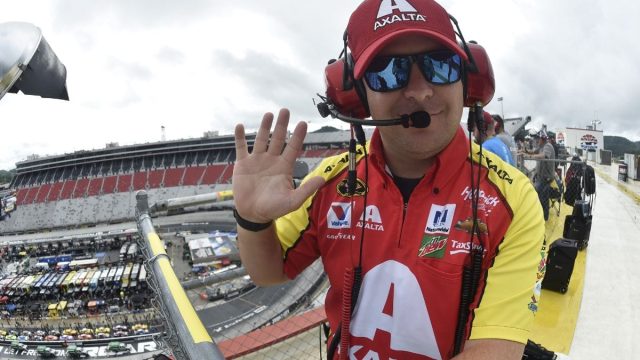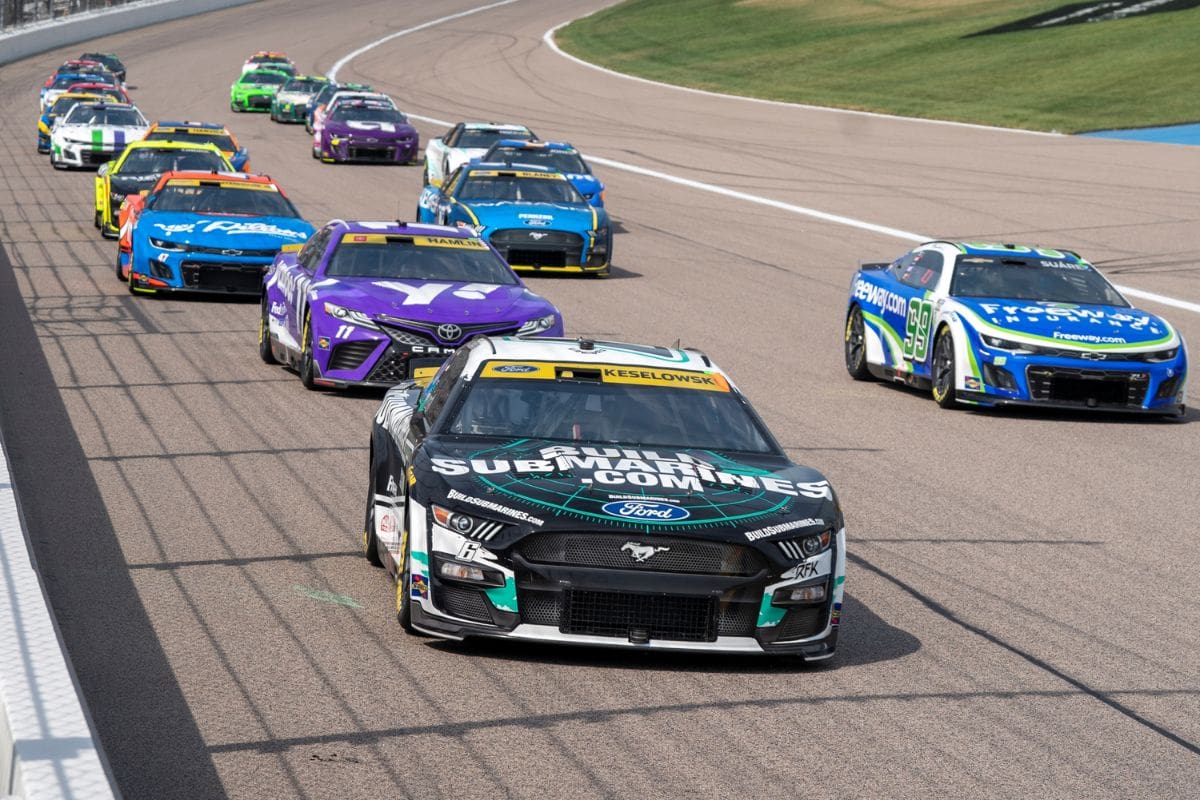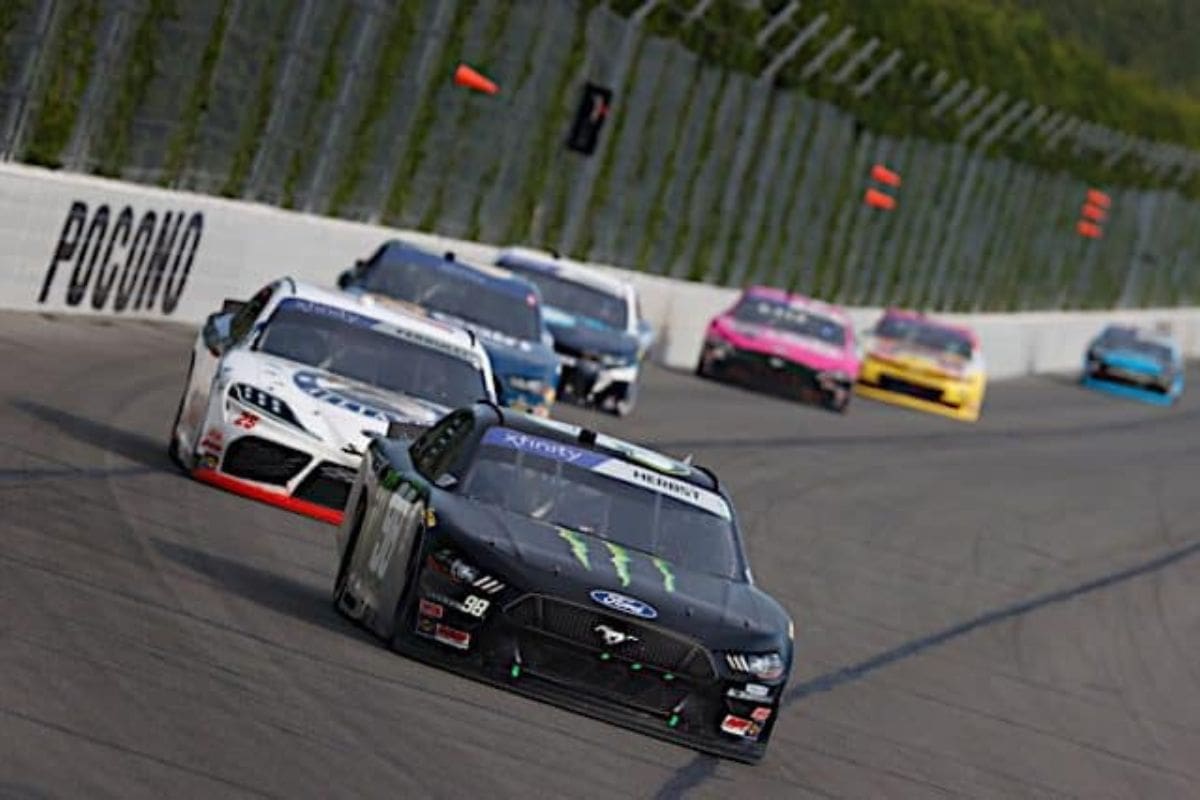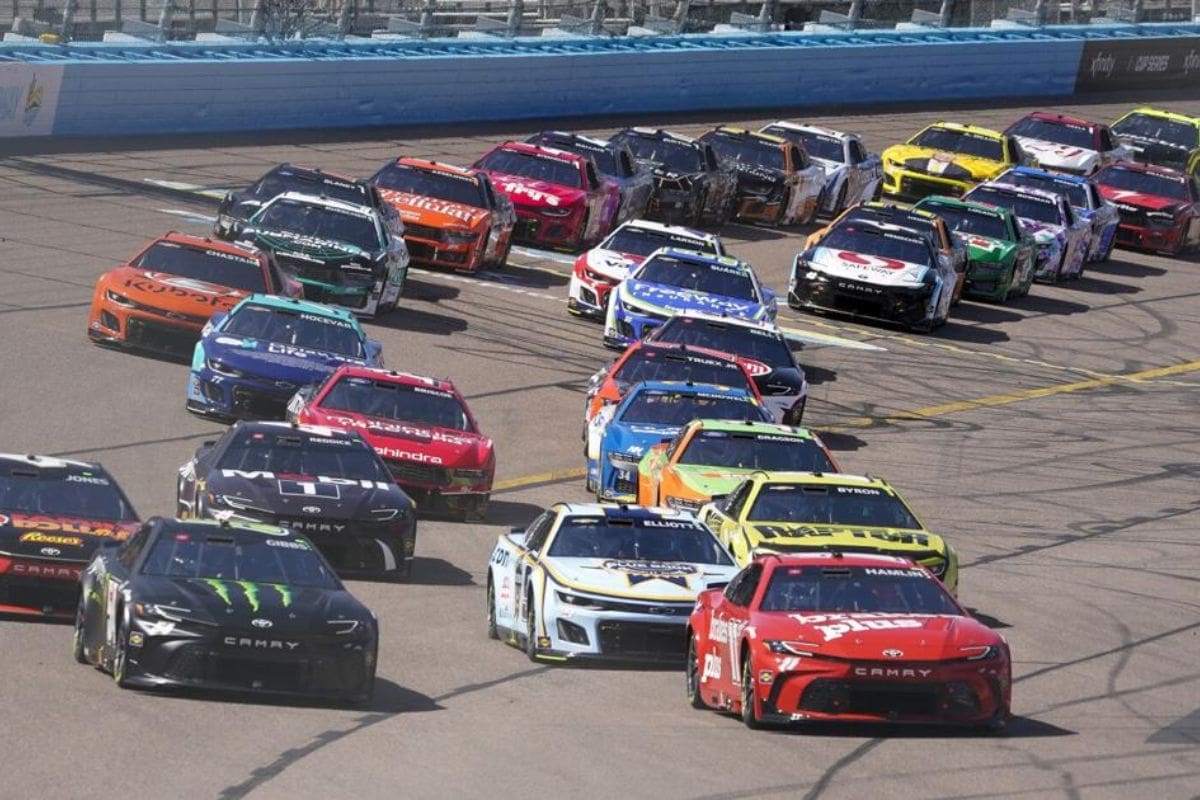Brad Keselowski’s Spotter Speaks on Watkins Glen’s Scary Crash: TJ Majors recently offered a detailed analysis of the alarming crash involving Brad Keselowski at Watkins Glen, highlighting the incident’s chaotic nature and the essential role of teammate Joey Logano‘s push. His commentary raised critical questions regarding the safety protocols in place, especially in view of the precarious situation surrounding William Byron’s vehicle. As Majors reflects on the emotional impact and the advancements in NASCAR safety measures, the discussion inevitably turns to what this incident reveals about the ongoing challenges faced by the sport. What implications might this have for future races and driver safety?
Key Highlights
- TJ Majors noted that the crash involving Brad Keselowski was chaotic and stemmed from aggressive racing tactics during challenging conditions at Watkins Glen.
- The collision was initiated by a push from Keselowski’s teammate, Joey Logano, leading to Keselowski losing control of his vehicle.
- Majors expressed relief that the wreck did not escalate, especially given the precarious positioning of William Byron’s car near Keselowski’s.
- He drew parallels to past severe incidents at Watkins Glen, highlighting the improvements in safety measures that have reduced serious injuries.
- The unpredictable nature of road course racing was emphasized, with spotters playing a crucial role in guiding drivers through complex situations.
RFK Racing Sunday Overview
On Sunday, the RFK Racing team experienced a mix of emotions that highlighted the unpredictable nature of motorsport. The contrasting performances of Chris Buescher and Brad Keselowski emphasized the duality of competitive racing, showcasing both exhilarating success and the potential for perilous incidents.
Chris Buescher, driving the No. 17 car, captivated observers with a commanding display of skill and strategy, ultimately securing a top position that left fans and competitors similarly in awe. His ability to navigate the track with precision not only illustrated the effectiveness of the team’s preparations but also their capacity to adapt to the dynamic conditions of the event.
Buescher’s performance is a confirmation of the rigorous training and meticulous planning that form the backbone of successful racing teams.
Conversely, Brad Keselowski’s day was blemished by a harrowing incident that sent shockwaves through the RFK Racing camp. Although the specifics of the crash remain a topic of concern, the team’s collective anxiety was palpable.
Keselowski, who also serves as a team owner, chose to refrain from elaborating on the wreck, a decision that may stem from both a desire to protect his team’s morale and to maintain focus on future races.
This incident serves as a striking reminder of the inherent risks involved in motorsport, where a single moment can drastically alter the course of a race and the safety of its participants. The contrast of success and tribulation encapsulates the essence of racing and the emotional rollercoaster that defines the sport.
Brad Keselowski’s Wreck at Watkins Glen
The nature of racing was vividly emphasized during Brad Keselowski’s wreck at Watkins Glen, marking yet another setback for playoff drivers on this notoriously challenging road course. As the race unfolded, Keselowski encountered the difficulties that have historically plagued competitors at this venue. His struggle was representative of the perilous balance required to navigate the winding turns while maintaining competitive speed.
- Keselowski’s performance mirrored the unfortunate trend of playoff drivers facing adversity at Watkins Glen.
- Throughout the race, he exhibited aggressive tactics, even spinning rivals like Denny Hamlin.
- The road course’s complexity often leads to unexpected outcomes, challenging drivers’ skills and instincts.
- Ultimately, Keselowski found himself on the receiving end of contact, culminating in a notable wreck.
- His spotter has since provided insights into the incident, highlighting the chaotic nature of the event.
The consequences of Keselowski’s wreck extend beyond the immediate impact on his race, as it highlights the inherent risks associated with road course racing.
Playoff drivers must navigate not only their own strategies but also the unpredictable dynamics of their competitors’ actions. This incident serves as a clear reminder of the constant strain faced by drivers in high-stakes environments
Details of the Wreck
Brad Keselowski’s tumultuous race at Watkins Glen culminated in a notable wreck that emphasized the unpredictable nature of NASCAR road course events. The incident unfolded on lap 83, just seven laps from the finale of the race.
After struggling through a challenging day, which included an early speeding penalty and a lost wheel during pit stops, Keselowski found himself embroiled in a critical moment that jeopardized both his safety and race performance.
The wreck was initiated when Keselowski, driving the No. 6 Ford, received a push from teammate Joey Logano while William Byron followed closely behind. This push resulted in a loss of control, leading both Keselowski and Byron to collide with the wall.
In a particularly alarming moment, Byron’s car climbed precariously atop Keselowski’s B-post, raising concerns about the potential for a more severe incident.
Willy B was here 😳 pic.twitter.com/Jy2karmrNG
— RFK Racing (@RFKracing) September 16, 2024
TJ Majors, Keselowski’s spotter, recounted the moments following the crash, noting the silence from Keselowski as he attempted to navigate out of the precarious situation.
“Honestly, he didn’t really say anything about it. I mean, he was trying to back up and get out of it, you know. It definitely had to be a weird time there to probably see a car right there.” – Majors
Majors highlighted the relief that the wreck did not escalate further, stating, “I’m actually really glad that it didn’t hook anything when he got up and it got over the fence a little bit.”
This sentiment emphasizes the inherent dangers of NASCAR racing and the critical importance of safety measures in preventing catastrophic outcomes.
The wreck at Watkins Glen serves as a vivid reminder of the volatile nature of the sport and the skill required to traverse its challenges.
Historical Comparison and Spotter’s Reaction
Reflecting on the dramatic wreck involving Brad Keselowski at Watkins Glen, TJ Majors, his spotter, drew parallels to past incidents at the track, emphasizing a rare occurrence of such severity in recent memory.
Majors recalled a similar incident from the late 1990s or early 2000s during a Busch North race, where a driver veered off the track and suffered a catastrophic crash, highlighting the inherent dangers of racing on such a challenging circuit.
“The last time I have seen somebody leave the park at Watkins Glen was probably like a Busch North race back in…the early 2000s maybe. It could have been the late ’90s as well. But somebody went off inside the track and on top of the esses there. They had a wreck in the esses and somebody hit somebody and they had it ramped up just like that and went to the infield.” – Majors
In analyzing the historical context of Keselowski’s crash, several key points emerge:
- The rarity of severe accidents at Watkins Glen in recent years.
- Previous incidents that involved similar dynamics of loss of control and subsequent impacts.
- The evolution of safety measures in NASCAR, which have markedly reduced the likelihood of serious injuries.
- The psychological impact on drivers and teams following a dramatic wreck.
- The importance of communication between drivers and spotters in preventing accidents.
Majors emphasized that while the crash was alarming, the outcome could have been far worse.
Keselowski emerged unscathed, thanks to the advancements in car safety and the quick response from the track personnel.
Moreover, the apology from the driver responsible for the incident contributed to alleviating any brewing tensions, showcasing the sportsmanship inherent in NASCAR.
Post-Race Reactions and Apologies
Post-race reactions to the Watkins Glen incident reveal a complex interplay of accountability and external factors impacting the drivers involved.
Brad Keselowski, visibly shocked by the incident, expressed his disbelief over the radio after being hit by his ex-teammate, Joey Logano. Keselowski’s crew chief and spotter quickly confirmed the identity of the driver responsible, emphasizing the unexpected nature of the crash.
Logano, in his post-race reflections, acknowledged his role in the collision, offering an apology to Keselowski while simultaneously attributing part of the blame to the treacherous track conditions.
“I just wanted to talk to him. I mean really, I’m not making any excuses, I needed to check up more but the track’s a complete disaster. They need to clean it up and I got pushed maybe four-wide at one point, so tried to give room there and got up in the marbles. When I went to turn back to the left, it’s got crap all over the tires and I got into him.” – Logano
Logano’s remarks highlight a critical aspect of the incident: the failure of NASCAR’s Goodyear tire experiment, which left drivers grappling with insufficient tire fall-off. He articulated his frustration with the track’s condition, noting that despite his awareness of the need for improved surface management, his calls for action went unanswered.
“It’s still on me, right, but at the same time, clean the damn track. I brought it up at least two to three times about cleaning the track before the restarts, but it just didn’t happen.” – Logano
Keselowski’s team shared a poignant image of the damaged No. 6 car, a clear reminder of the risks inherent in the sport. Fortunately, he escaped without serious injury, allowing him to shift focus to his upcoming races.
News in Brief: Brad Keselowski’s Spotter Speaks on Watkins Glen’s Scary Crash
The crash involving Brad Keselowski at Watkins Glen highlights ongoing safety concerns within NASCAR, despite advancements in protective measures. The incident, exacerbated by a teammate’s push, emphasizes the unpredictable nature of high-speed racing and its potential for chaos. The emotional impact on drivers and teams remains considerable, reflecting the inherent dangers of the sport. Continuous evaluation and improvement of safety protocols are crucial to further mitigate risks and protect participants in future events.
ALSO READ: Brad Keselowski’s Watkins Glen Nightmare: Teammate’s Victory Can’t Mask Crushing Defeat



